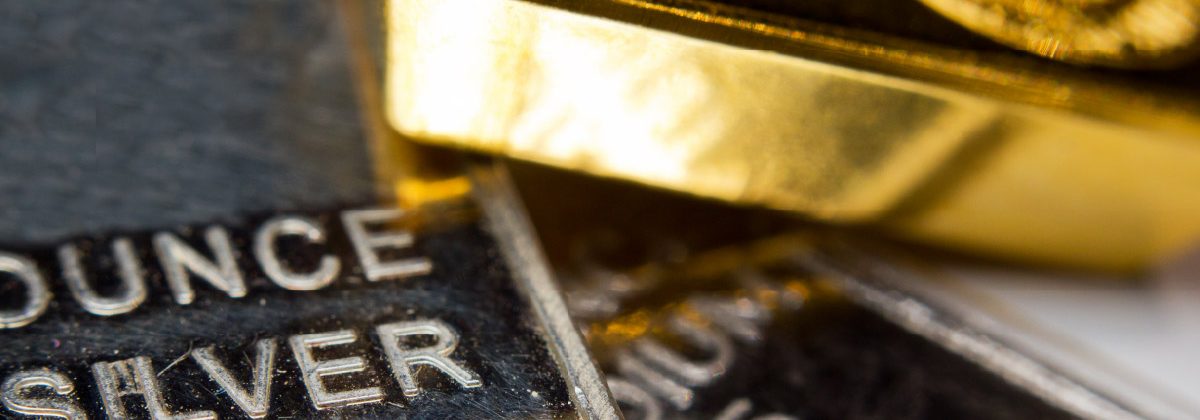Gold & Silver Correction in October: Understanding the Causes

After both gold and silver hit new all-time highs in the first half of October 2025, the two precious metals saw a sharp correction on October 17. Gold and silver prices plummeted on the Multi Commodity Exchange (MCX) amid a wave of profit-taking following a temporary easing of geopolitical and economic tensions. The prices of both metals further eased on October 21, when gold futures declined 0.24% to $4,349.24 per ounce and silver fell 1.72% at $50.50. This pullback was attributed to easing geopolitical tensions ahead of President Trump’s meeting with Chinese Premier, Xi Jinping.
Market experts, however, see this decline as a healthy correction and a development that was expected after the enthusiastic rally over the past months. If you are trading precious metals, understanding the forces behind this dip is crucial for your future trading strategies.
What Caused the October 2025 Correction?
Several key factors converged in October 2025 to trigger the decline in gold and silver price.
Stronger-Than-Expected US Economic Data
A major driver was surprisingly robust economic data from the United States. Reports on consumer spending, manufacturing output, and employment all came in above consensus. This suggested that the US economy was more resilient than previously thought. Strong economic data reduces the attractiveness of safe-haven assets. Gold and silver often shine during times of economic uncertainty. When the economy looks healthy, investors prefer riskier assets like stocks.
The Federal Reserve’s Hawkish Shift
The US Federal Reserve (Fed) changed its tone. Previously, the markets expected further interest rate cuts in late 2025. However, due to the strong economic data, the Fed hinted it might keep interest rates higher for longer. Some even suggested a potential for another rate hike if inflation showed signs of re-accelerating. Higher interest rates make non-yielding assets like gold and silver less attractive. Investors can earn more by holding bonds or saving cash. This makes holding precious metals less appealing. Gold price is particularly sensitive to interest rate expectations.
Strengthening US Dollar
Following the Fed’s hawkish comments and strong economic data, the US dollar (USD) began to strengthen significantly. Gold and silver are priced in USD. So, when the dollar strengthens, it makes these metals more expensive for buyers using other currencies. This often leads to reduced demand and lower gold and silver prices.
Easing Geopolitical Tensions
Through much of 2025, geopolitical tensions had provided a floor for precious metals. However, a series of diplomatic breakthroughs in October reduced some of these global risks. President Trump scored his meeting with President Xi a 12 on a scale of 1-10, stating that “an outstanding group of decisions made.” Meanwhile, President Xi Jinping said that the two nations had “good prospects for cooperation,” and that US-China relations were seeing “overall stability.” Gold is often seen as the ultimate safe haven during global crises. As tensions eased, the demand for this protective asset decreased. This removed a key support for the gold price.
Technical Selling and Profit-Taking
Before October, both gold and silver had enjoyed a prolonged rally. Many investors had made substantial profits. As the fundamental picture changed, many traders decided to take their profits off the table. This selling intensified the downward move. Once key technical support levels were broken, algorithmic trading systems also kicked in, adding to the selling pressure. This created a domino effect, leading to a deeper correction for both gold and silver.
How to Trade the Correction
A market correction can be unsettling, but it also presents new opportunities for metals trading.
Re-evaluate Fundamental Drivers
Look at the factors that caused the correction. Is the US economy truly on a sustained strong path? Will the Fed remain hawkish? Are geopolitical tensions truly resolved, or merely paused? Don’t just react to price. Understand the underlying economic shifts. If the fundamental reasons for the correction persist, further downside might be possible. If they reverse, it could signal a buying opportunity.
Identify Key Technical Levels
After a correction, new support and resistance levels emerge. Use charts to identify where the selling stopped (new support) and where previous support might now act as resistance. Moving averages, pivot points, Fibonacci retracements, Bollinger Bands and volume analysis are popular technical analysis tools for this. For gold trading, watch for the price to stabilise around a significant moving average or previous swing low. For silver, due to its higher volatility, ensure a clear consolidation pattern forms before considering new positions.
Consider Dollar Strength
The strength or weakness of the USD is a major factor. If the dollar continues its upward trend, it will likely cap any significant rally in precious metals. If you’re bearish on the dollar, a subsequent weakening could be a strong bullish signal for both gold and silver prices. A strong dollar would suggest caution.
Diversify Your Approach
Consider other ways of trading precious metals, such as gold and silver ETFs, and mining stocks. Mining stocks can offer exposure to metal prices, but come with their own company-specific risks. Evaluate individual company fundamentals carefully before opening a position.
Risk Management is Key
During times of high volatility, reduce your position sizes. This helps manage risk if the market moves against you. In addition, always use stop-loss and take-profit orders. These automatically close your trade if the price hits a certain level, limiting potential losses or locking in profits. Don’t rush into trades. Let the market consolidate and show its next direction. Corrections often take time to resolve. A wait-and-see approach can be very beneficial.
Long-Term Perspective
For long-term investors, gold and silver still serve as a hedge against inflation and currency debasement. A temporary correction might be viewed as a buying opportunity for long-term holdings.
The October 2025 correction in gold and silver prices was a stark reminder of market dynamics. While painful for some, it created a new landscape for opportunistic traders. By understanding the causes and applying disciplined trading strategies, participants in metals trading can navigate the post-correction environment effectively.
To Sum Up
- Gold and silver prices began to decline in the second half of October 2025 after a meaningful rally that spanned several months.
- Stronger-than-expected US economic data, the Fed’s hawkish stance, a strengthening US dollar, easing geopolitical tensions and profit-taking by many investors led to the correction.
- To trade this change of trend in gold and silver, focus on the fundamental drivers of price.
- Keep an eye on the dollar’s strength.
- Diversify your approach to metals trading and don’t forget to include risk management measures.
- A temporary correction could present a buying opportunity for long-term metals traders.
Disclaimer:
All data, information and materials are published and provided “as is” solely for informational purposes only, and is not intended nor should be considered, in any way, as investment advice, recommendations, and/or suggestions for performing any actions with financial instruments. The information and opinions presented do not take into account any particular individual’s investment objectives, financial situation or needs, and hence does not constitute as an advice or a recommendation with respect to any investment product. All investors should seek advice from certified financial advisors based on their unique situation before making any investment decisions in accordance to their personal risk appetite. Blackwell Global endeavours to ensure that the information provided is complete and correct, but make no representation as to the actuality, accuracy or completeness of the information. Information, data and opinions may change without notice and Blackwell Global is not obliged to update on the changes. The opinions and views expressed are solely those of the authors and analysts and do not necessarily represent that of Blackwell Global or its management, shareholders, and affiliates. Any projections or views of the market provided may not prove to be accurate. Past performance is not necessarily an indicative of future performance. Blackwell Global assumes no liability for any loss arising directly or indirectly from use of or reliance on such information here in contained. Reproduction of this information, in whole or in part, is not permitted.



